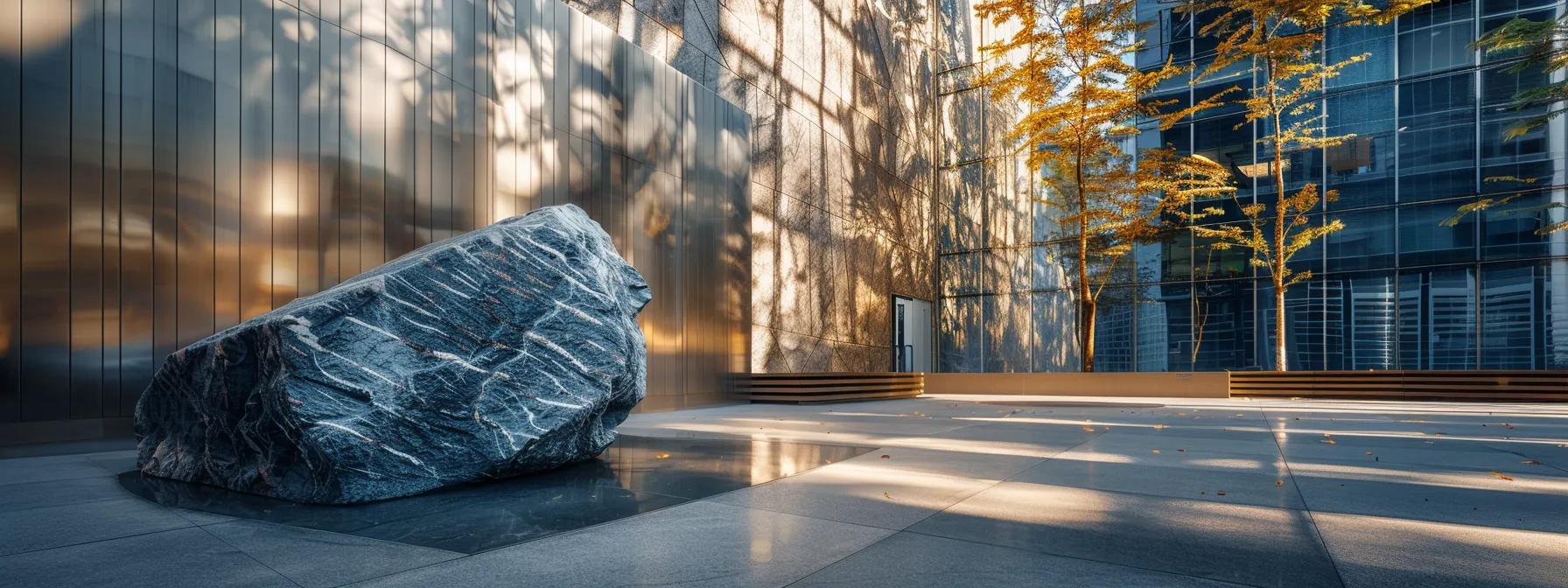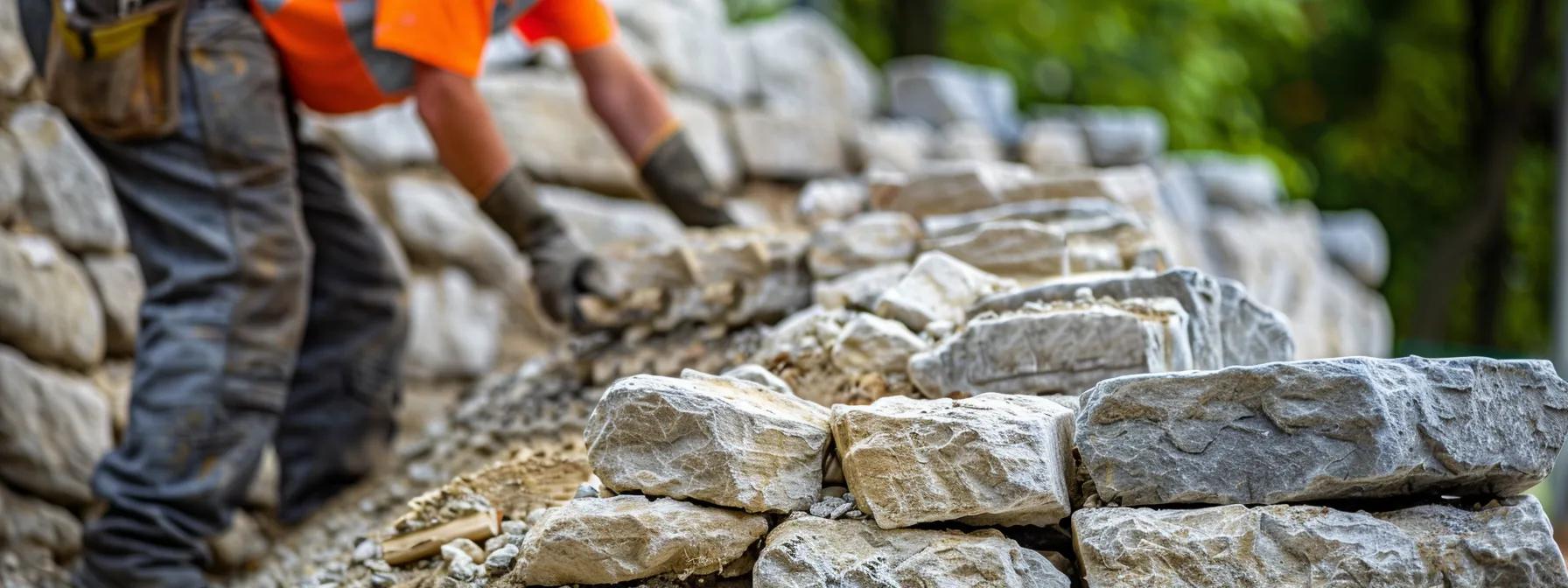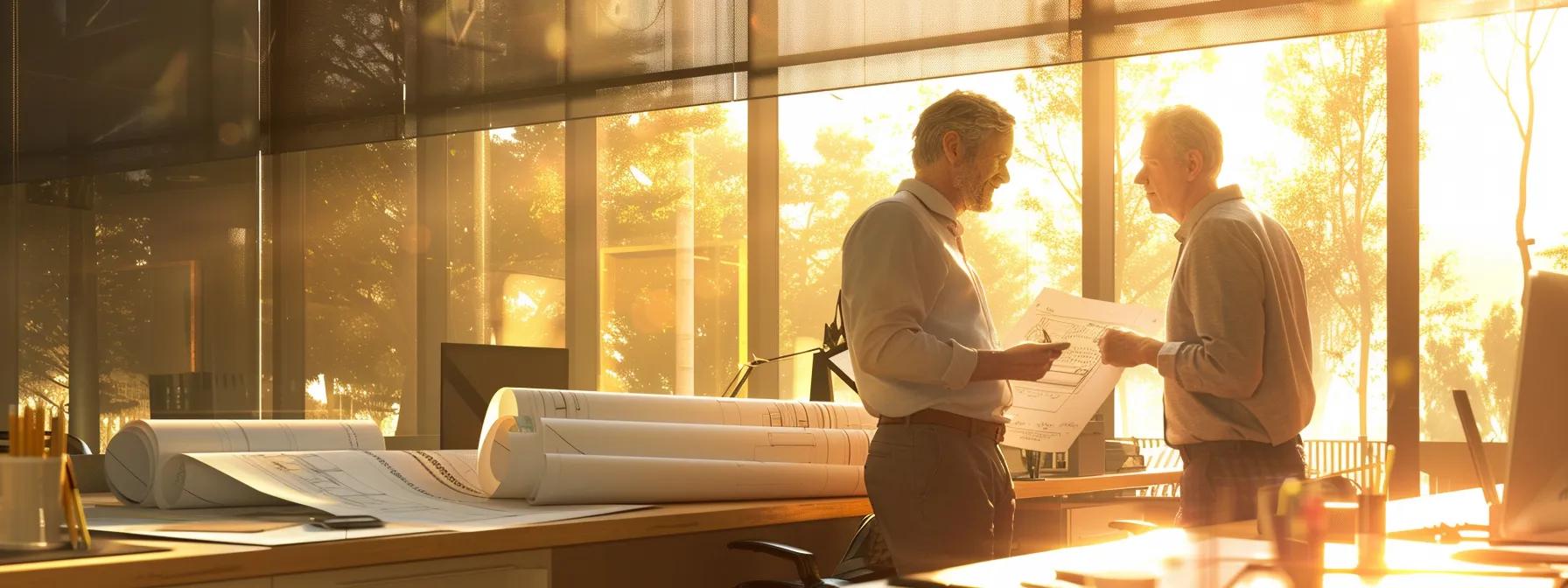Welcome to our Blog
The Brainerd Boulders Blog

Crafting a Boulder Retaining Wall to Enhance Outdoor Space
How to Design a Stunning Boulder Retaining Wall for Your Landscape: Complete Guide to Design, Construction, and Cost
Designing and constructing a boulder retaining wall is a challenging yet rewarding project that transforms a yard with uneven terrain into a visually appealing and functional landscape. Homeowners and business owners in Central Minnesota, including the northern Twin Cities metro area, can benefit from natural boulder walls that enhance erosion control, define garden spaces, and add architectural interest. This comprehensive guide covers design considerations, construction steps, cost breakdowns, hillside solutions, permit requirements, sustainable practices, and contractor selection. Whether you are considering a DIY project or hiring professionals like Pine Ridge Lawn& Landscape, the information presented here will help you design a retaining wall that lasts for decades while complementing local climate and granite conditions.
What Are the Key Design Considerations for a Boulder Retaining Wall?
Designing a boulder retaining wall requires balancing functionality with aesthetics. Key factors include selecting appropriate boulder sizes, ensuring proper structural support, integrating compatible materials, and aligning the design with the overall landscape plan. These decisions affect the wall’s durability, appearance, and its ability to manage soil and water.
How Do You Choose the Right Boulders for Your Retaining Wall?
Choosing boulders involves selecting stones that are both structurally sound and visually pleasing. Boulder shape, weight, texture, and color should harmonize with the natural surroundings. Irregular stones sourced from local quarries typically provide a natural look. Additionally, boulders must be frost-resistant and chemically inert to withstand Minnesota’s freeze-thaw cycles. A limestone test and consultation with local landscapers can help determine the best boulders based on terrain and foundation needs.
What Aesthetic Elements Enhance Boulder Retaining Wall Design?
Visual appeal is enhanced by natural stone veneers, hardscape elements like flagstone or gravel, and landscaping with indigenous shrubs. Color coordination, balanced proportions, and varied textures create depth and interest. Thoughtfully planned lighting and irrigation can further highlight the wall’s features, especially in the evening.
How Does Landscape and Terrain Influence Retaining Wall Design?
The terrain, including slope gradient, soil type, drainage patterns, and vegetation density, dictates design adaptations. In hilly areas, extra reinforcement may be needed to counter lateral soil pressure, while flat areas might focus more on aesthetics and subtle water management. The gabion wall should blend with existing garden features such as shrubbery, pathways, and patios, ensuring a harmonious overall appearance.
What Are Sustainable Design Practices for Boulder Retaining Walls?
Sustainable design minimizes environmental impact and long-term maintenance costs. Using locally sourced boulders reduces transportation emissions, and incorporating permeable backfill and eco-friendly drainage systems maintains natural water flow. Integrating native plants decreases reliance on fertilizers and excessive irrigation, while recycled materials for bedding or mortar can further enhance sustainability and wall longevity.
How Do You Build a Durable Boulder Retaining Wall? Step-by-Step Construction Guide

Constructing a sturdy boulder retaining wall involves careful planning, methodical execution, and attention to detail at every stage. A well-built wall prevents soil erosion, manages water runoff, and enhances your property’s appearance.
What Site Preparation and Soil Excavation Are Required?
Proper site preparation is fundamental. A detailed survey identifies the optimal wall location and alignment. Clear the site of debris, vegetation, and unstable soil layers. Excavate a slightly recessed foundation to accommodate bedding material such as crushed stone or gravel, which helps level the boulders and improve drainage. If the soil contains clay, additional drainage layers may be needed to prevent water buildup behind the hillside boulder retaining wall .
How Is Proper Drainage Installed in Boulder Retaining Walls?
Effective drainage is key to long-term stability. A drainage pipe, embedded at the wall’s base with a layer of coarse gravel or crushed stone, disperses water and reduces hydrostatic pressure. Adding geotextile fabric between the soil and drainage material prevents clogging by fine particles. Regularly spaced weep holes allow water to escape, further ensuring the longevity ’s structural integrity.
What Are the Best Techniques for Boulder Placement and Stability?
Stability relies on strategic boulder placement. Begin with the largest, most stable boulders placed in a staggered pattern, overlapping joints for interlocking strength. Partially embed each boulder in the soil or a concrete footing so that gravity helps resist movement. Techniques like dry stacking—fitting boulders precisely without mortar—can be effective, but in areas with high lateral pressure, additional retaining wall anchors may be advisable.
How Do You Finish and Landscape Around the Retaining Wall?
Once the wall is constructed, finishing and landscaping create a refined appearance. Edge treatments define the transition between the wall and landscape. Planter boxes, ornamental shrubs, or ground cover plants soften the rock’s ruggedness. A layer of mulch or natural gravel improves drainage and aesthetics. Low-voltage
can accentuate the wall’s texture, and a well-planned irrigation system will provide water to nearby plants without saturating the backfill.
What Is the Cost Breakdown for Building a Boulder Retaining Wall?
Understanding the cost breakdown helps you budget effectively and plan your project. Costs vary based on materials, labor, permits, and additional enhancements like landscaping or drainage improvements.
How Much Do Materials, Labor, and Permits Typically Cost?
Materials cost depends largely on boulder quality and local availability. High-quality natural boulders generally range from $50 to $150 per ton. Additional costs include bedding materials like gravel and geotextile fabric for drainage. Labor costs vary with project complexity and typically range from $40 to $100 per hour. Permitting fees vary by municipality, usually between $200 and $1,000. Always include a contingency in your budget for unforeseen complications, such as additional excavation or reinforcement.
What Factors Affect the Overall Price of a Boulder Retaining Wall?
The wall’s height and length significantly impact total costs by affecting material quantity and labor time. Complex terrain, such as steep slopes, requires additional engineering and drainage measures, which add expense. The finish—whether boulders are simply stacked or carefully selected for aesthetic effect—also influences pricing. Seasonal labor fluctuations and sustainability options, such as eco-friendly materials or advanced drainage systems, may further affect the overall cost. Additionally, the choice between different types of stone, such as limestone or granite, can influence both appearance and budget.
Should You Choose DIY or Professional Installation?
DIY installation might seem cost-effective, but the technical challenges of boulder retaining wall construction can lead to expensive mistakes. Professional contractors offer expertise in site assessment, material selection, and structural design that often result in a more durable and reliable foundation . Moreover, hiring professionals minimizes the risk of future repairs, and the long-term benefits of their experience often outweigh the initial cost difference.
What Permits and Regulations Are Needed for Boulder Retaining Wall Projects?

Before beginning construction, it is essential to review local regulations regarding retaining walls. Permits ensure that your wall complies with safety standards, zoning laws, and environmental guidelines, preventing future legal issues.
When Is a Permit Required for Retaining Wall Construction?
Typically, a permit is needed when a retaining wall exceeds 3 to 4 feet in height or when it affects landscape drainage or the structural integrity of neighboring properties. Even for lower walls, it is wise to consult with local building authorities to ensure compliance with engineering and safety standards. A proper permit also adds value to the property and provides assurance to future buyers.
How Do Local Regulations Affect Boulder Retaining Wall Design?
Local codes may restrict the wall’s height, specify materials, and dictate its distance from property lines. Regulations might require detailed engineering plans, including soil tests, load-bearing calculations, and drainage solutions. Adhering to these standards not only prevents legal complications but also ensures that the design seamlessly integrates with community aesthetics and longevity .
How Can You Ensure Your Project Meets Safety Standards?
Ensuring safety involves a combination of thorough planning, sound engineering, and professional construction. Hiring a licensed contractor, obtaining structural reviews from a professional engineer, and following all permitting and inspection processes can guarantee that the wall meets necessary safety protocols. The use of quality materials and proven construction techniques is critical to the wall’s long-term performance.
How Can You Enhance Your Boulder Retaining Wall With Sustainable and Eco-Friendly Practices?
Incorporating sustainability into your retaining wall design not only benefits the environment but also can reduce maintenance costs over time. Eco-friendly practices make the wall more integrated with the natural landscape.
What Are Environmentally Friendly Material Sourcing Options?
Sourcing boulders and other materials locally reduces transportation costs and emissions while supporting regional suppliers. Reclaimed or recycled materials for mortar and bedding layers contribute to waste reduction. Using natural limestone substitutes or additives like fly ash in concrete can also lower the carbon footprint of your construction project.
How Do Sustainable Drainage Systems Improve Wall Longevity?
Sustainable drainage systems (SuDS) are engineered to mimic natural water flows. Features such as permeable surfaces, gravel layers, and bio-retention cells reduce water buildup behind the wall, lowering hydrostatic pressure. This not only extends the wall’s life but also nurtures surrounding vegetation by facilitating natural water absorption. can help integrate these systems seamlessly into your design.
What Landscaping Techniques Complement Sustainable Retaining Walls?
Complementary landscaping supports both aesthetics and sustainability. Native plants that require minimal water and fertilizers, along with ground covers that stabilize soil, enhance the overall design and reduce maintenance. Drip irrigation systems and organic mulches, such as wood chips, improve moisture retention and enrich the soil naturally, creating a resilient, eco-friendly landscape.
Where Can You Find Expert Boulder Retaining Wall Contractors and Services?

The success of your project often relies on hiring the right contractor. Experienced professionals bring the necessary expertise and equipment to handle all aspects of efficiently.
How to Choose the Right Contractor for Your Boulder Retaining Wall?
Select contractors with relevant certifications and a proven track record in similar projects. Look for those familiar with Central Minnesota’s unique soil and weather conditions. Reading online reviews, reviewing past projects, and obtaining detailed written proposals are vital steps to ensure you choose a reliable expert. Asking about warranty services and post-installation maintenance can also help secure long-term longevity .
What Questions Should You Ask Boulder Retaining Wall Experts?
During consultations, ask about their approaches to drainage, structural design, and material selection. Clarify how they manage local permitting requirements and potential challenges posed by Minnesota’s weather. Inquire about timelines, installation techniques, and whether they incorporate eco-friendly practices. These questions will help ensure that the contractor is well-qualified to deliver a durable and aesthetically pleasing hillside boulder retaining wall .
How Do Local Services Customize Boulder Retaining Wall Designs?
Local contractors tailor designs to address specific site conditions such as terrain, soil composition, and vegetation. They integrate custom boulder arrangements, complement existing hardscape features like patios or fire pits, and design drainage solutions that meet local standards. This customization results in a wall that not only performs well but also enhances the regional architectural style.
Before beginning construction, homeowners should obtain detailed quotes and ensure every cost component is clearly defined. Budgeting accurately will help allocate funds appropriately while leaving room for unforeseen expenses.
Frequently Asked Questions
Q: What is the primary purpose of a boulder retaining wall? A: Its main function is to stabilize soil on sloped terrain, prevent erosion, manage water runoff, and enhance the overall look of your landscape by creating usable garden spaces and supporting natural drainage.
Q: How long does it take to build a boulder retaining wall? A: Construction time varies with design complexity, site preparation, and weather. Generally, a professionally installed wall takes between one and three weeks, including permitting and inspections.
Q: Are boulder retaining walls maintenance-intensive? A: When built correctly, they require minimal maintenance. Routine inspections, occasional landscaping touch-ups, and professional assessments every few years help address issues like shifting stones or blocked drainage.
Q: Can I build a boulder retaining wall myself? A: DIY construction is possible but requires significant expertise in site preparation, structural engineering, and drainage. For larger or more complex walls, professional installation is recommended to ensure safety and durability.
Q: What sustainable practices can be used in building a boulder retaining wall? A: Sustainable practices include sourcing local boulders, using eco-friendly bedding materials and drainage systems, integrating native landscaping, and employing reclaimed or recycled construction materials.
Q: How do I choose between a DIY project and hiring a contractor? A: Consider your experience, the project scope, and available tools. DIY might work for smaller, simpler walls on flat terrain, but for uneven slopes and larger installations, hiring a professional ensures efficiency, longevity, and long-term stability.
Q: What factors influence the overall cost of a boulder retaining wall? A: Key factors include the wall’s height and length, the quality and source of the boulders, labor rates, local permitting fees, and additional features like eco-friendly drainage or aesthetic enhancements. A detailed cost analysis during planning helps in managing the budget effectively.
Final Thoughts
A boulder retaining wall is a valuable investment that stabilizes your landscape and elevates its aesthetic appeal. With careful attention to design—from choosing the right boulders and ensuring proper drainage to adhering to local regulations and introducing sustainable practices—homeowners can create a structure that stands the test of time. This guide, along with professional consultation, aims to help you confidently navigate the planning and construction process. A well-designed wall reflects your commitment to both functionality and longevity.

Working Hours
Mon: 7am - 5pm
Tues: 7am - 5pm
Wed: 7am - 5pm
Thur: 7am - 5pm
Fri: 7am - 5pm
Sat: Closed
Sun: Closed


